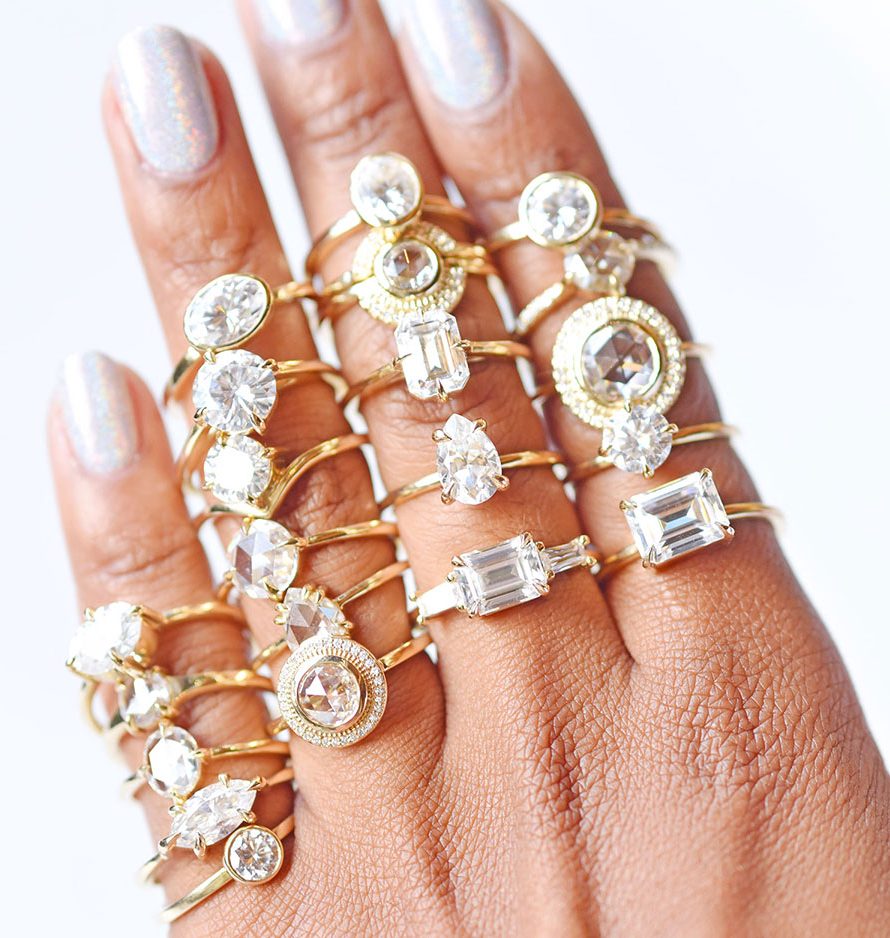What wedding jewelry customers want and how they’re shopping for it—in 2021 and beyond
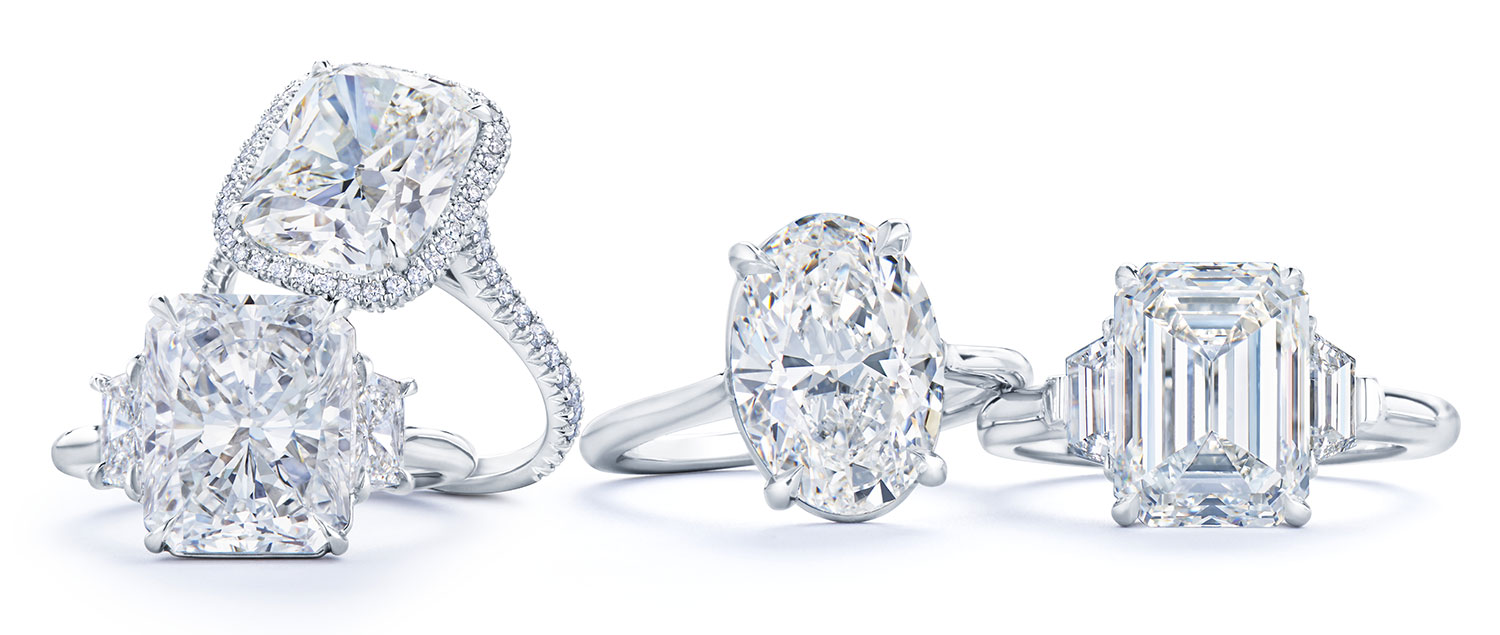
In jewelry’s bridal category, as with virtually all consumer goods, the road to recovery in 2021 is digital. That much we know. But beyond that, what does a retailer aspiring to sell engagement and wedding rings to the soon-to-be-wed need to know about doing business in the 2020s?
Here’s the good news: Jewelers who continue to modernize and heed the shopping conventions and consumer attitudes that the events of 2020 set in place, quite possibly forever, are poised to have a banner year. Many of the experts JCK consulted for this story reported robust, even record-breaking, bridal sales over the 2020 holiday season. The collective understanding is that the pandemic prompted couples to postpone wedding plans or at least downsize their celebrations and hold off on honeymoons, leaving extra funds not only for the engagement ring but also for the wedding bands.
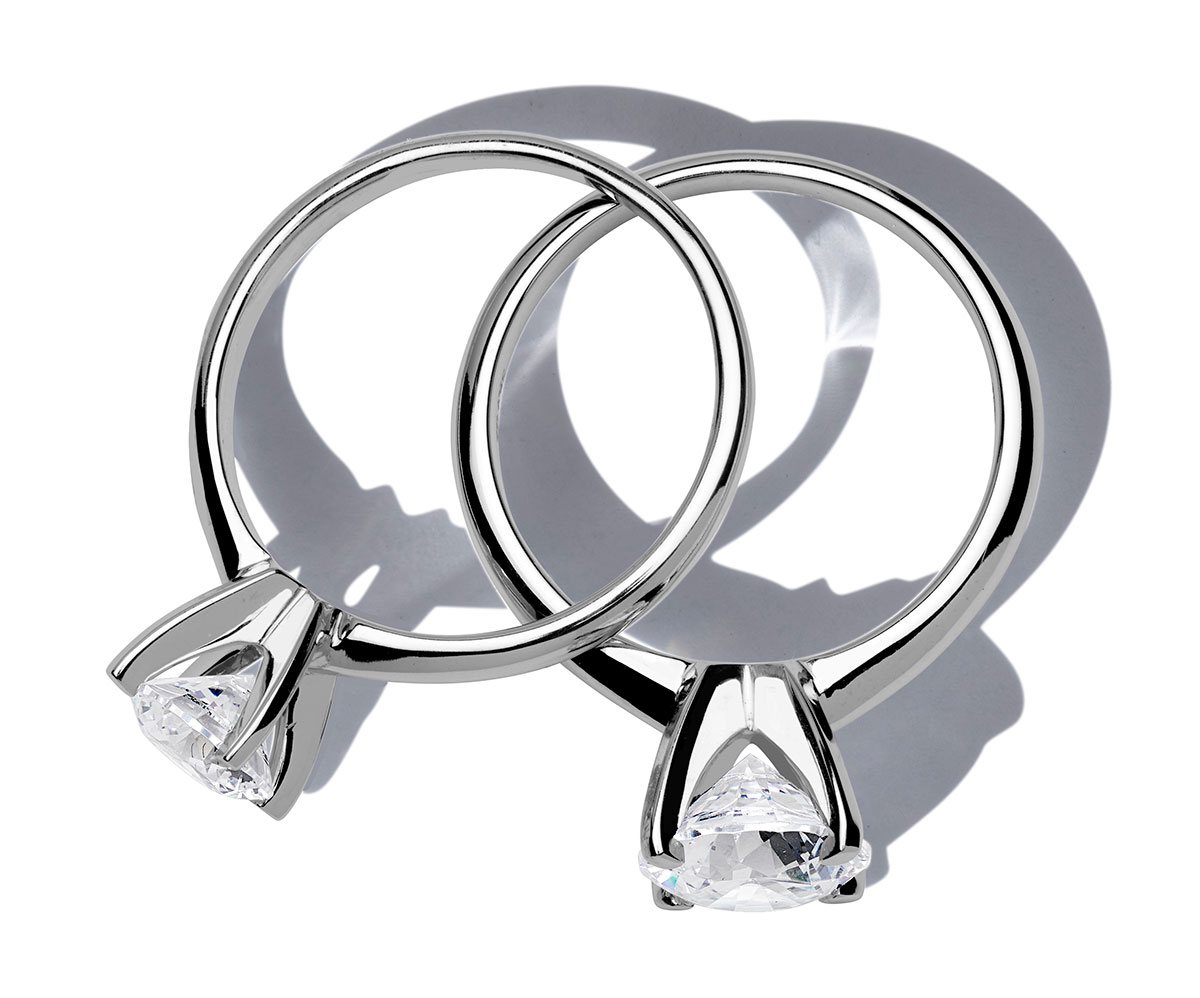
Now is the time to build on this momentum and take your digital strategy to the next level.
“It’s foolish to think that the way we do business is going to go back to normal [circa 2019],” says Sam Sandberg, CEO of bridal jewelry specialist A. Jaffe. Instead, he says, think about taking the profits that have come from this unprecedented time and investing them in store branding and building stronger relationships with consumers (online, naturally).
The conditions for closing a sale could not be more favorable. Pandemic-era shoppers do not want to spend time visiting multiple stores—the browsing process is happening online. So when they arrive at your store, they’re laser-focused on completing their purchase.
“By the time they set foot in one of our physical locations, they have already done their homework, spending countless hours getting inspired on social media and visiting our website to make their selection,” says Katie Reed, vice president of marketing at Watches of Switzerland, which owns Mayors, a leading jewelry retailer in the southeastern United States. “In response, we’ve ramped up our social media presence and improved our e-comm user experience to meet the needs of the modern, click-to-brick shopper.”
Read on for a long list of additional changes to anticipate, think about, and capitalize on in the months ahead.
The 2021 bridal customer wants more customization options.
Throughout the pandemic, independent bridal jewelry designers conducted virtual appointments with clients based here, there, and everywhere, and what emerged from that collective migration to digital was a boom in sales of bespoke engagement rings.
For traditional retailers, one way to compete is to offer templated styles that allow for some personalization.
“The build-your-own bridal ring is an important category,” notes Valerie Fletcher, vice president of design and product development at Original Designs Inc. (ODI) in New York City. “It’s the most important piece of jewelry a person will wear, and nobody wants to buy it ‘off the rack.’”
If your in-house designers don’t have the bandwidth to execute concepts quickly, the solution is to work with vendors who can easily design on CAD and are willing to do revisions as needed (such as Stuller through its Ever & Ever collection of bridal prototypes), or those who offer easy-to-navigate online tools that make clear the customizable possibilities.
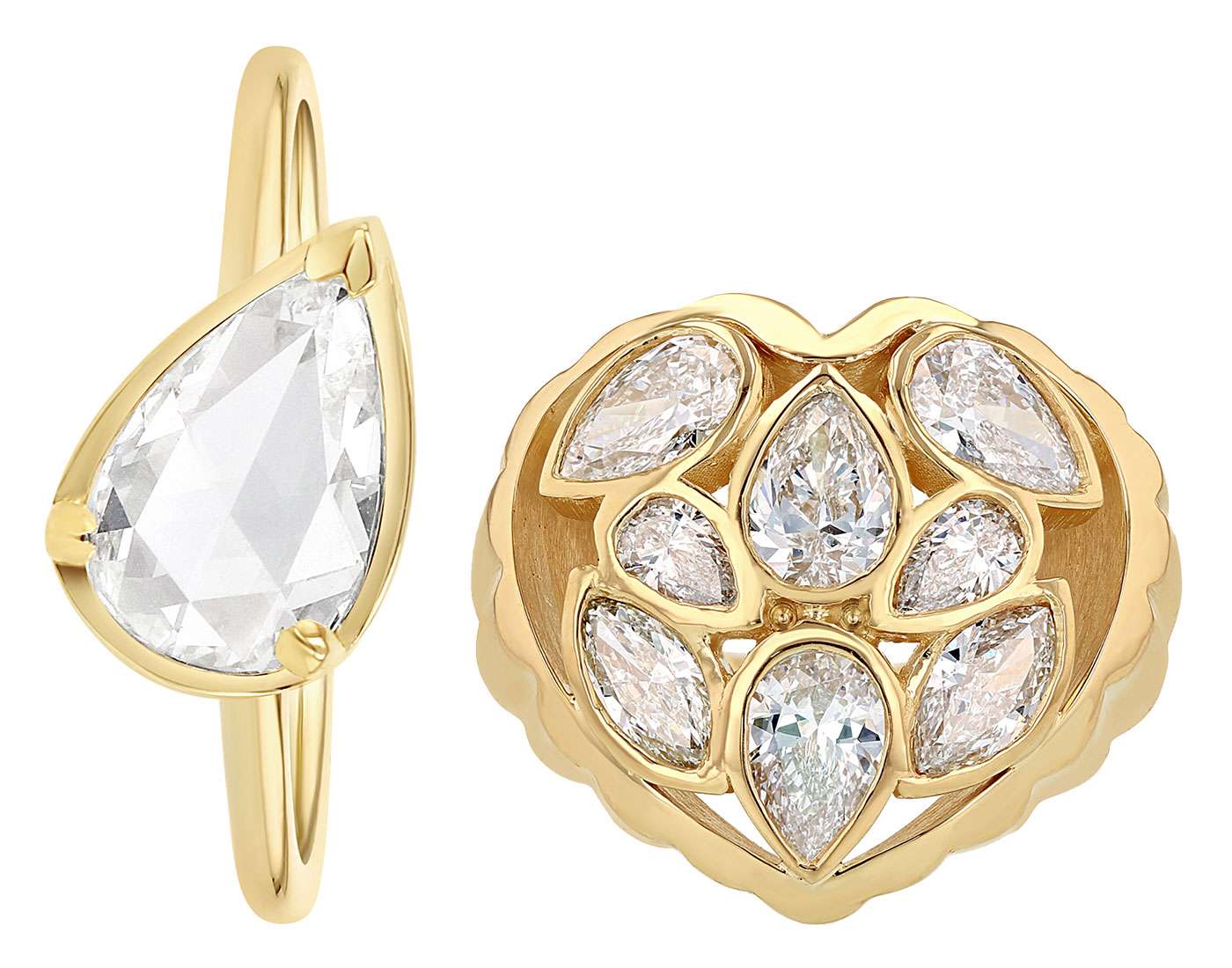
For example, heritage jeweler Kwiat recently introduced a “Design Your Ring” section on its website, allowing shoppers to create something that is unique to them. “Based on this design, we can create their individual ring in our workshop, keeping them involved in the process the entire way, from the big decisions like the shape and size of the center stone to the small details of the ring mounting,” says CEO Greg Kwiat.
Issues of inclusion, diversity, and social justice are important to engagement-minded shoppers.
“The Gen Z consumer is forecasted to be the most diverse and open-minded of any previous consumer,” says Reggie Johnson, senior vice president and chief diversity officer at Signet Jewelers, parent company to Kay Jewelers and Zales. “Also, our proprietary research shows that 40% of our soon-to-be-engaged customers are multicultural and/or LGBTQ+. Given our values as a company and those of our audience, we see incredible opportunity to connect to customers through compelling stories and imagery that celebrate difference.”
Brands that want to champion diversity and inclusion must execute on those ideals by casting Black, Indigenous, and people of color (BIPOC) or transgender models in their marketing and advertising campaigns—it won’t be long before brands that fail to do so will stand out. Investing in BIPOC designer talent and regularly promoting their collections via email, trunk shows, and social channels is another important step. But the efforts have to go beyond the optics—remember, this is the year that businesses will be held accountable.
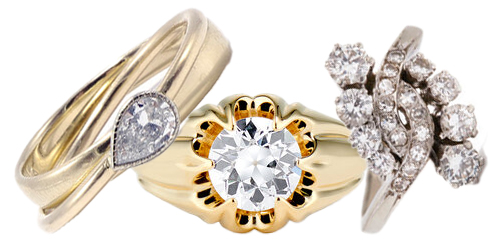
“The modern bridal consumer is checking to see that the values and ethics of a company align with their own beliefs,” says Nellie Barnett, cofounder and communications chair for the Black in Jewelry Coalition.
With regard to the Black Lives Matter movement, jewelers can demonstrate their commitment to social justice and an antiracist point of view through their affiliations with community leaders and groups that are focused on these issues and by donating to organizations that directly affect Black businesses or individuals.
The emphasis on domestic social justice issues adds another layer to topics that continue to matter to consumers, including sustainability, ethical mining practices, and transparency. “But we should all keep in mind that younger consumers are not single-minded when it comes to causes they support,” says Severine Ferrari, founder and editor-in-chief of Engagement 101.
With 1.2 million followers across social platforms, Ferrari has a unique lens on the events of 2020, and how the soon-to-wed cohort has reacted to them. Her advice: “Jewelers should publicly embrace and support a few causes that feel right to them, or research a local issue, one that could show younger consumers in their area that they care about supporting something that matters to them.”
Alternative bridal stones are no longer the domain of bohemian or budget brides.
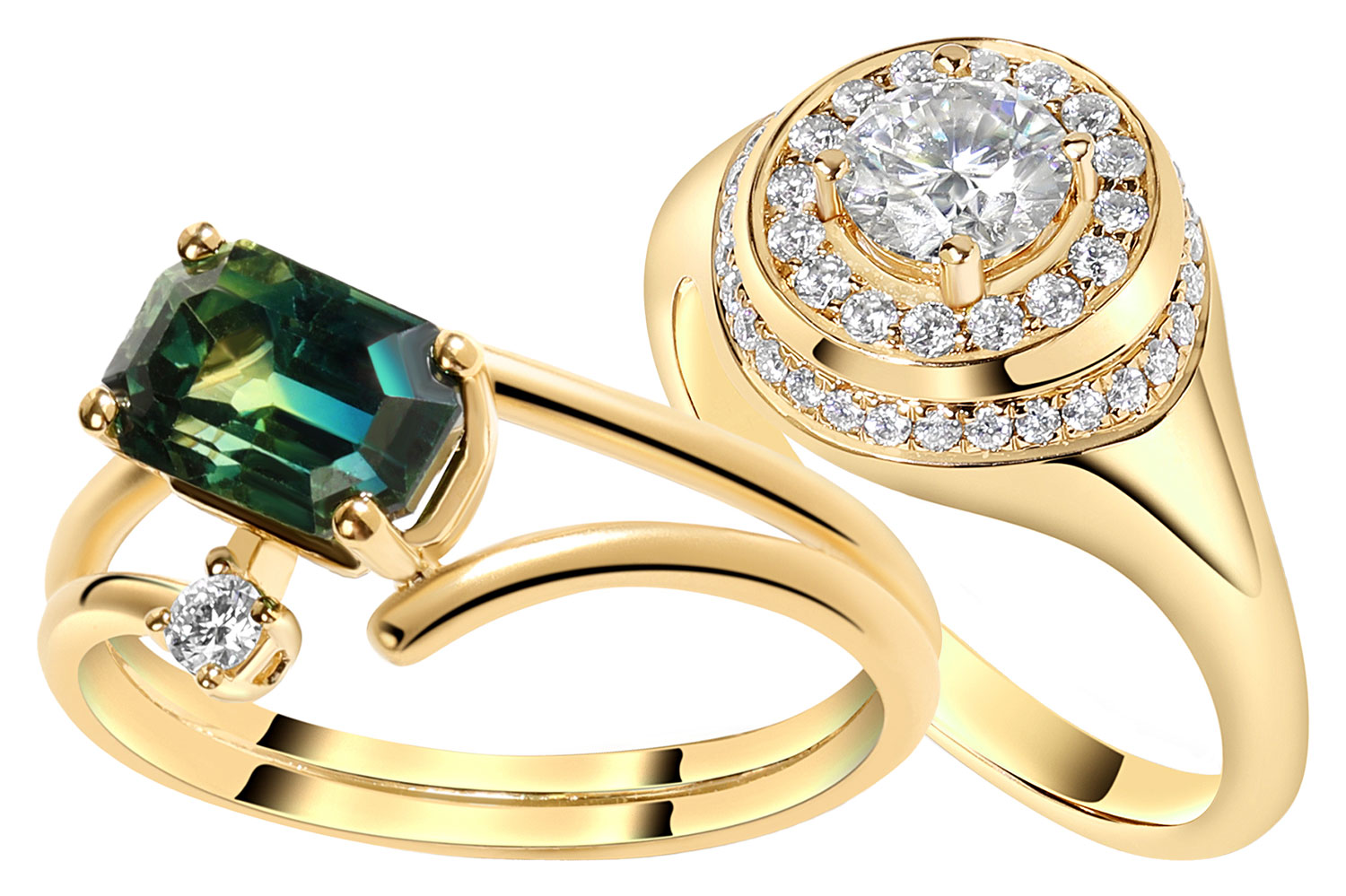
Entire bridal businesses are being built on Instagram-scrolling customers’ desire for “unique.”
And they’re thriving: “Unique stones are the foundation of my business,” says Seattle-based designer Valerie Madison, who recently opened a studio/showroom space to complement her successful e-commerce site. “I personally prioritize sourcing and approving our gemstones, and it has allowed us to demonstrate that we can be a reliable source for unique jewelry.”
Gemstones that Madison’s customers love—such as moissanite, milky white diamonds, Montana sapphires, and salt-and-pepper diamonds—may not be to a traditional retailer’s taste, but it’s a mistake to discount the popularity of an organic aesthetic.
“A lot of traditional retailers think the alternative client is a different or a lower-spending client, and that it’s an either-or scenario,” says Catherine Cason, founder of Gem Breakfast, the successful, San Francisco–based e-commerce site specializing in engagement rings. “I don’t see it that way. We definitely have people who are spending $10,000 on an engagement ring; they’re just getting a 3 or 4 carat salt-and-pepper center stone. It’s still a client who is spending a lot of money; they just want something different.
“Our typical client wants to see a variety of traditional and alternative stones,” Cason adds. “They will often choose a mount with white diamond accents to offset an alternative center stone. They like the mix.”
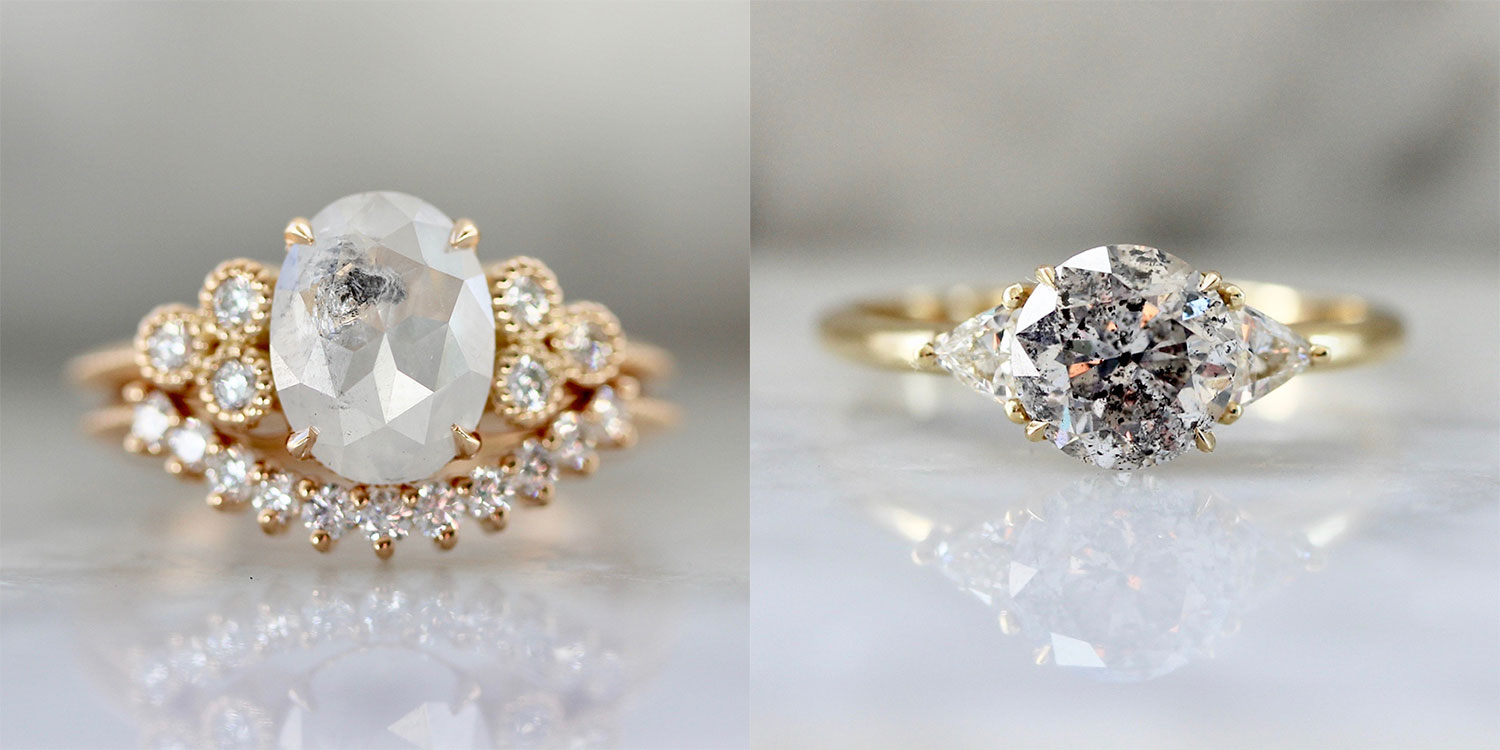
Accessibly priced, ready-to-wear designer engagement rings are in demand.
Increasingly, the “customer” for such rings is actually a couple operating as a team. “They’re millennials—so not super young anymore—who have gravitated away from the traditional diamond engagement ring business over the past decade,” says Andrea Hansen, founder and president of Luxe Intelligence, a jewelry sales and marketing consultancy based in Seattle. “The idea of a semigeneric diamond ring purchased in a jewelry store from a case has not held much appeal to them.”
While the national average cost of an engagement ring is $5,500 (according to The Knot), down slightly from $5,900 in 2019, the sweet spot for the customer Hansen is describing is $4,000 or less.
That price point is a critical feature of De Beers Group’s Ten/Ten collection. Introduced in January, the line features engagement rings created by 10 of-the-moment fine jewelry designers and set with sustainably sourced, natural diamonds from Botswana. The center stones are smaller than 1 ct. to ensure an accessible price point of $3,000 to $4,000 per ring, and all 10 designs are sold on Blue Nile in limited editions of 10 each.
“I can see why both De Beers and Blue Nile sought an association with these designers,” says Hansen, who consulted with Ten/Ten designer Marla Aaron. “Each one of the 10 designers provides a fresh take, a new story to tell, in the tired space of diamond jewelry and engagement rings. What else is really there to say about another ‘bridal trend’ that speaks of ‘two-tone accents,’ ‘halo is still No. 1,’ or ‘marquises are back’? Every year when you read a bridal trend report, all you get is a variation of those themes. The designer story, the artisanal story, shakes that up.”
There’s also an attitude shift to note here, in part prompted by the aggressively casual lifestyle that the pandemic has thrust upon us: Modern bridal customers are not overly concerned with wear-everyday longevity. They don’t think the vibe of the ring should be so imposing and serious (like Mom’s). And they definitely don’t care what tradition tells their partner to spend on it (e.g., three months’ salary).
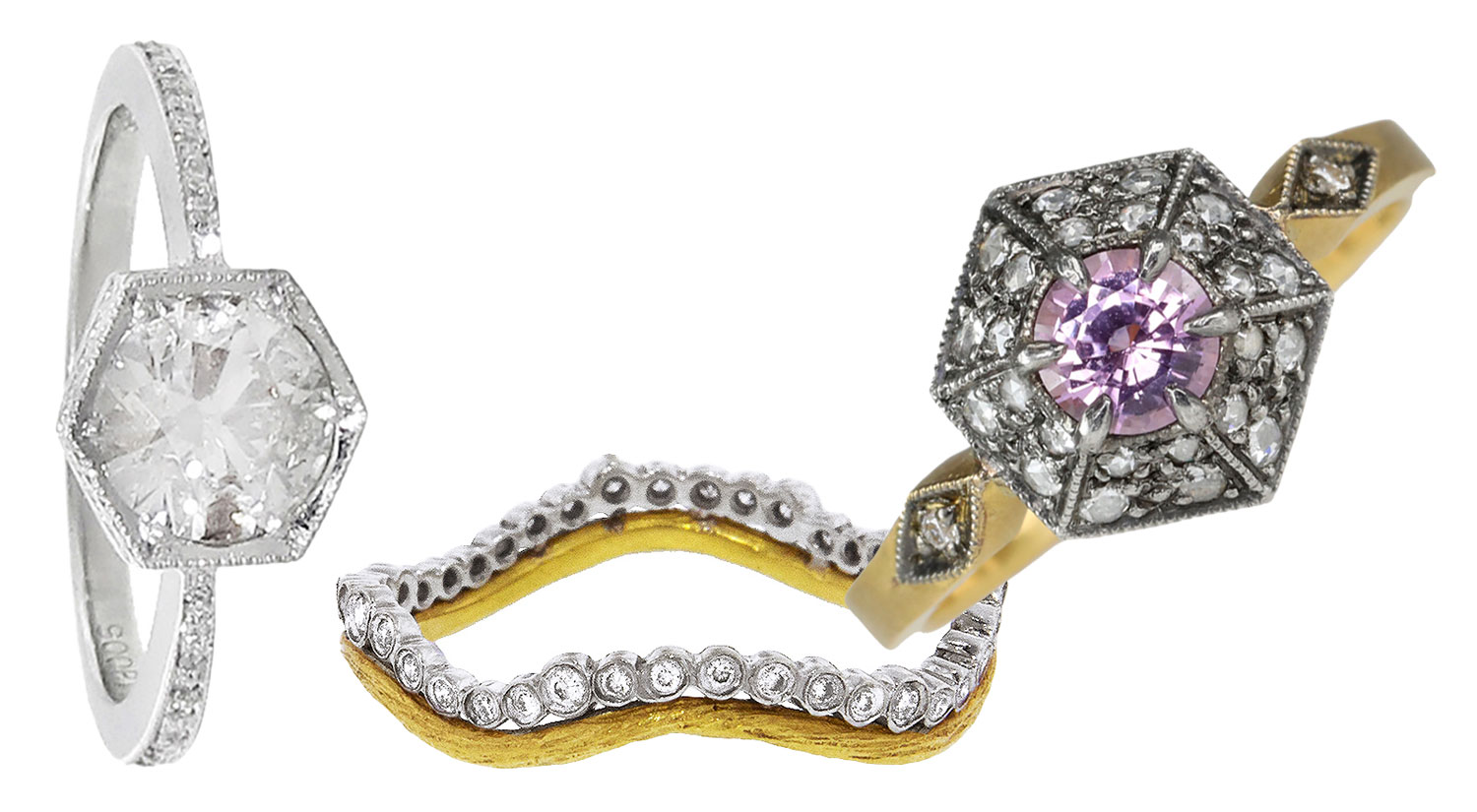
Lab-grown diamonds have penetrated the bridal market, and consumer awareness and demand are on the rise.
In 2021, jewelers may find themselves having to make the case for natural diamonds with a handful of engagement ring customers. Be ready to discuss claims of lab-growns being more eco-friendly with a host of well-researched arguments.
For example, here’s the approach that Melissa Quick, president of Steve Quick Jeweler in Chicago, takes: “If it’s an eco-friendly concern specifically, I remind them that a lot of energy is required to make lab-grown, and it’s not all green. If they are worried about social responsibility, I tell them about the hundreds of thousands of people in mining regions who are gainfully employed, educated, housed, receiving health care, etc. Chances are they have no idea what the economic impact is in these regions and how whole segments of the population would be adversely impacted if we went to exclusively lab diamonds.”
In a shaky economic climate, some couples may be viewing the engagement ring purchase through the lens of long-term investment. In this case, the possibility that lab-grown diamonds could depreciate in value may resonate: “I don’t make it a practice in all my years of business to sell a declining asset,” says Harvey Rovinsky, owner of Bernie Robbins Jewelers, which has multiple store locations in New Jersey.
Whatever you do, don’t bad-mouth the product. Listen to your clients, answer their questions, and respect their decisions, even if you disagree. “It’s really the shoppers who are driving the conversation as they themselves become more educated about diamonds,” says Camile Hannoush, owner of Michaels Jewelers in Connecticut, which carries both natural and lab-grown diamonds.
Wedding bands are no longer an afterthought.
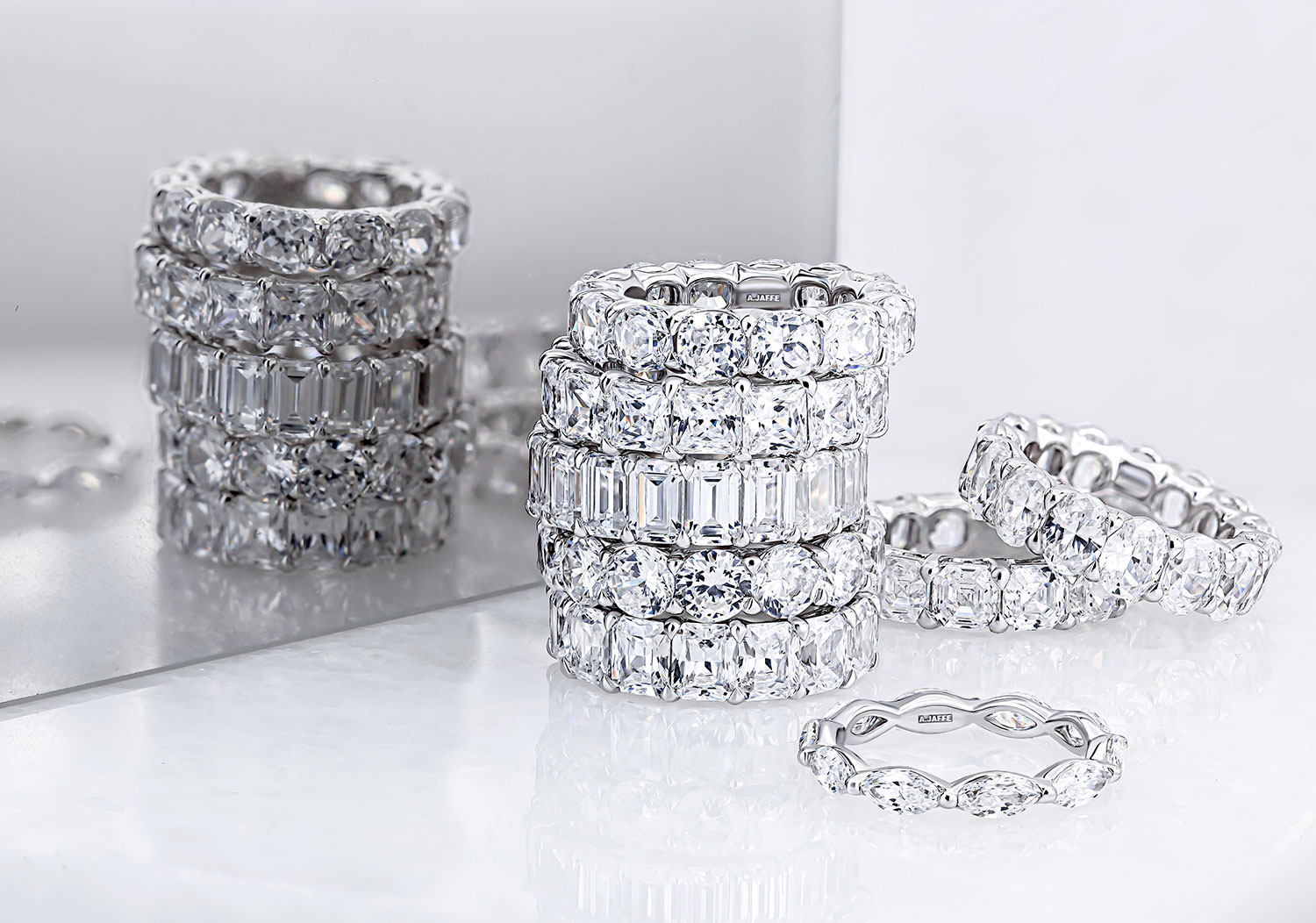
Pre-pandemic, the wedding band purchase would often come toward the end of the wedding planning process. Standard options from a designer or manufacturer’s core collection would suffice, and the final decision was somewhat rushed.
Now that couples have more time to spend on style decisions due to wedding postponements, the wedding band has become a newly important consideration. Custom designs, or big-ticket diamond eternity bands that are often worn on their own and viewed as interchangeable with the engagement ring, are the focus.
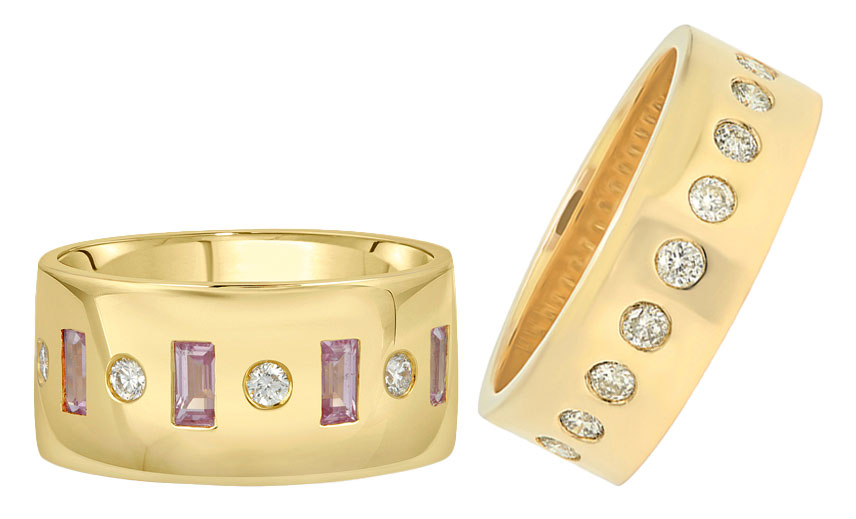
Initiate conversations about the wedding bands sooner rather than later so there is plenty of time to explore the possibilities together.
Unisex bands in a wide range of sizes, with and without diamonds, are a wise buy.
The trans community and same-sex couples are driving demand for gender-fluid ring styles that blur the lines between traditionally masculine (chunky bands, often in alternative metals with unique textures) and feminine (a diamond solitaire). The expectation is that jewelers will offer plenty of styles for consideration.
Now would be a good time to get familiar with the term inclusive sizing. It’s a call for suppliers to offer rings in sizes that will fit larger fingers—up to size 16, if possible—and for retailers to have them available to try on in-store.
“This is important because humans come in different sizes, and by carrying limited sizing, it creates exclusion and reinforces a patriarchal, fatphobic, homophobic reality,” says Al Sandimirova, founder and CEO of jewelry manufacturer Automic Gold in New York City. “The fine jewelry industry is notoriously exclusionary, but my sales prove that there is a hunger for change.”
Top: assorted moissanite engagement rings in 14k gold; $3,000–$10,000 each; Valerie Madison; wholesale@valeriemadison.com; valeriemadison.com
